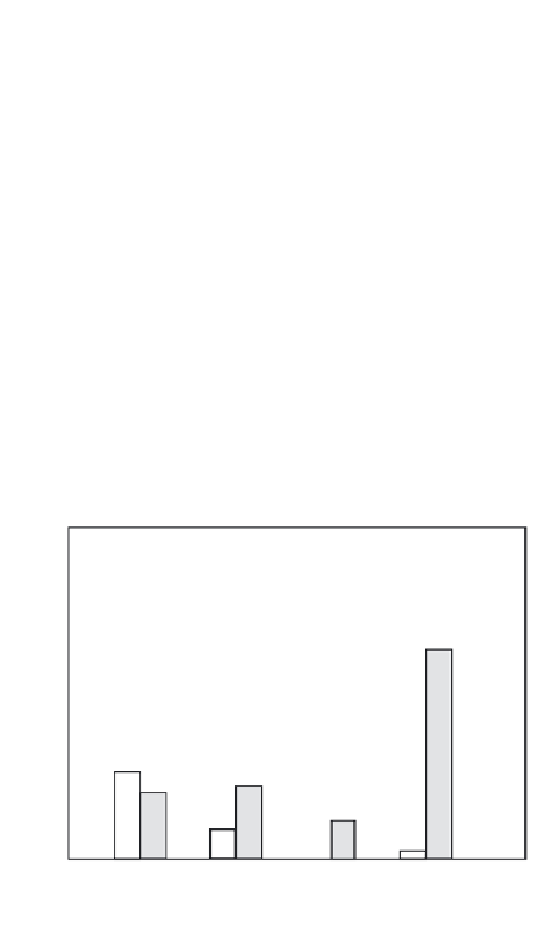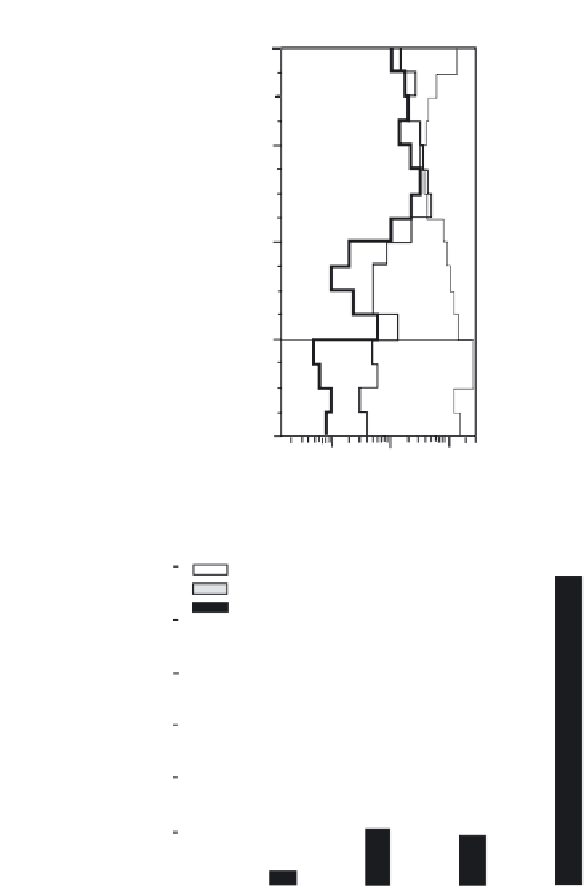Geoscience Reference
In-Depth Information
(a)
0
100
200
300
Au
Hg
OC
400
0.01
0.1
1
Au & Hg (ppm); OC (%)
(b)
Historical overbank sedimentation rate
Pre-mining
Mining
Post-mining
2.4
2.0
1.6
1.2
Fig. 3.16
Mining-related accumulation of metals in
floodplains. (a) Vertical distribution of gold (Au),
mercury (Hg) and organic carbon (OC) in floodplain
alluvium, north Georgia. (After Leigh 1997.)
(b) Historical overbank sedimentation rate of pre-,
syn- and post-mining alluvium in the Blue River
Watershed, Wisconsin. Note the spatial and temporal
lag in redistribution of syn-mining alluvium in the
downstream (
>
100 km
2
) portion of the basin.
(After Lecce & Pavlowsky 2001.)
0.8
0.4
0.0
10
−
50 km
2
<10 km
2
50
−
100 km
2
>100 km
2
Drainage area (km
2
)
Mine drainage from both metalliferous and
coal mining areas is a common source of metal
contamination to river systems. The leaching
of metals from exposed and buried waste is
controlled by factors such as mineral dissolu-
tion, sulphide mineral oxidation and secondary
mineral precipitation. These secondary minerals
often precipitate or flocculate as discrete particles
or as coatings on other grains; these particles
co-precipitate or sorb the dissolved metals and
are subsequently deposited or transported down-
stream. Mining operations themselves can also
alter the natural fluvial geomorphology during
the construction of artificial drainage networks
and other structures.
3.4.1.3 River regulation and channelization
River systems are regulated for many reasons,
including more efficient navigation, flow, bank
erosion, drainage and flood control, stabiliza-
tion of channels, provision of surface water



